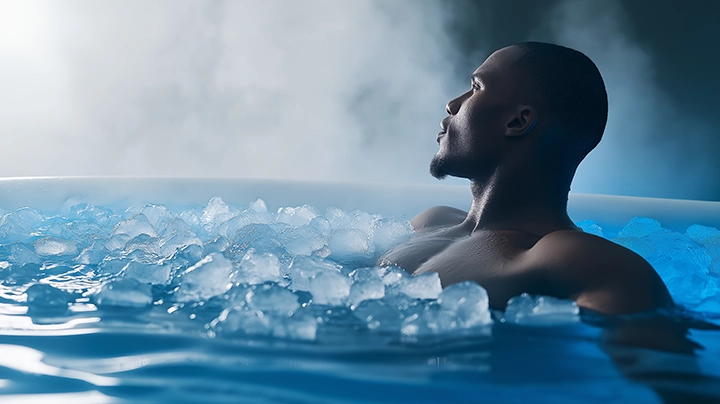Diving into Recovery: The Impact of Water Immersion Techniques on Athletic Performance

Water immersion recovery techniques have become increasingly popular among athletes seeking to enhance their performance and reduce recovery time. This article explores the science behind these methods, examining their potential benefits and providing practical recommendations for implementation.
Understanding Water Immersion Techniques
Water immersion recovery can be categorized into four main techniques based on water temperature:
- Cold Water Immersion (CWI): ≤20°C (68°F)
- Hot Water Immersion (HWI): ≥36°C (96.8°F)
- Contrast Water Therapy (CWT): Alternating between CWI and HWI
- Thermoneutral Water Immersion (TWI): >20°C to <36°C (68°F to 96.8°F)
Cold Water Immersion: The Chilling Champion
Cold water immersion, often referred to as an "ice bath" or "cold plunge," has gained significant traction in the athletic community. Research indicates that CWI can enhance recovery of performance across various sports.
Optimal Protocol:
- Temperature: 10-15°C (50-59°F)
- Duration: 5-15 minutes
The effectiveness of CWI may vary depending on factors such as water temperature and the time between immersion and subsequent exercise.
Hot Water Immersion: A Warm Debate
While hot tubs are popular for relaxation, the research on hot water immersion for performance recovery presents mixed results. Studies examining post-exercise HWI have reported conflicting findings, making it challenging to draw definitive conclusions about its effectiveness.
Contrast Water Therapy: The Hot-Cold Cycle
Contrast water therapy involves alternating between hot and cold water immersion. This technique has shown promise in enhancing performance recovery under certain conditions.
Optimal Protocol:
- Equal time in hot and cold water
- Short individual immersion durations (~1 minute each)
- Total immersion time up to 15 minutes
Thermoneutral Water Immersion: The Lukewarm Approach
TWI has been used both as a control in studies and as an intervention itself. However, due to conflicting findings, it's uncertain whether TWI significantly improves recovery of subsequent exercise performance.
Comparative Effectiveness
Current evidence suggests that both CWI and CWT are likely to assist in exercise performance recovery more effectively than HWI and TWI. However, further research is needed to determine which technique is most effective.
Practical Recommendations for Athletes
-
Experiment with different techniques: Individual responses may vary, so try various methods to find what works best for you.
-
Consider timing: The effectiveness of water immersion may depend on when it's performed relative to your next workout.
-
Use appropriate equipment: Invest in quality immersion tools for consistent recovery sessions.
-
Monitor your response: Keep track of how you feel after each session and adjust accordingly.
-
Integrate with other recovery methods: Combine water immersion with proper nutrition, sleep, and other recovery techniques.
The Future of Water Immersion Recovery
As research in this field continues to grow, we can expect to gain more insights into optimizing protocols for different sports, individual athletes, and specific training phases. Whether you're a professional athlete or a fitness enthusiast, incorporating water immersion recovery into your routine could potentially enhance your performance and reduce recovery time.
Remember to consult with a sports medicine professional or coach before implementing new recovery strategies. With the right approach, water immersion techniques could become a valuable tool in your athletic performance toolkit.
References: